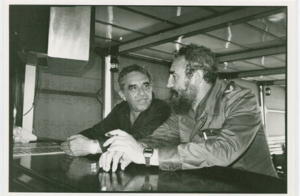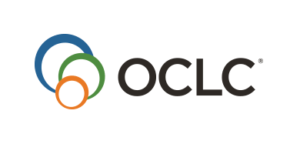Featured Blog Post by 2019 DLF Forum Sponsor, OCLC
Open New Research Opportunities with Your Digital Collections
by Jullianne Ballou
Project Librarian, Harry Ransom Center, The University of Texas at Austin

The Harry Ransom Center at The University of Texas (UT) at Austin holds more than 28,000 pages of writing, research, and photographs from the collection of Colombian-born writer Gabriel García Márquez, and it has made many of these available online in a digital archive. As Project Librarian Jullianne Ballou explained, “A lot of our researchers are textual editors curious about differences across versions of a manuscript or about the writer’s process.”
“As a part of our grant application to CLIR (the Council on Library and Information Resources),” Jullianne said, “we proposed integrating IIIF and the Mirador image viewer with our digital collection pages, primarily to make the García Márquez online archive even more usable.” The IIIF Image and Presentation APIs make it easy for researchers to zoom in and conduct side-by-side comparisons of images, even images held by different libraries in different repositories. “People would love to see a comprehensive collection of García Márquez’s work,” she said, and the IIIF integration with CONTENTdm and the Mirador viewer makes this closer to a reality. “Scholars imagine being able to join dispersed manuscripts, letters, and books from in a single viewer. They’re excited by the potential of IIIF.”
“Our researchers envision IIIF as the key to unlocking the question of what a universal collection could look like.”
In addition to the Mirador viewer, many researchers use the OpenSeadragon viewer that comes standard with CONTENTdm. “We like that we have the opportunity to offer our audiences both viewers,” Jullianne said. “OpenSeadragon allows our patrons to zoom in to a manuscript page or a photograph without leaving the original CONTENTdm record. I’ve gotten great feedback on that.” In the reading room, García Márquez scholars are limited to viewing one folder of documents at a time and enlarging details with a magnifying glass. But with the Center’s digital library, they can pan, zoom, and compare pages from different folders within their browsers, without even downloading images. “The images just generally tend to be easier to access and use,” she added.
 To help researchers and other special collections staff understand the potential of this technology, Jullianne and her team have developed training opportunities. “The Ransom Center is the first library at UT to implement IIIF APIs, with OCLC’s help,” she explained. “We’re holding tutorials for students and staff on how to make the most of it.” As she reaches out to other campus libraries, she has found exciting opportunities for collaboration. “We have amazing map collections at UT,” she said. “We’ve had some discussions about combining our knowledge resources to do something really cool with IIIF and maps.” As more digital collections implement the IIIF standard, she added, “the conversation about what collections of the future—including digital collections—will look like becomes richer.”
To help researchers and other special collections staff understand the potential of this technology, Jullianne and her team have developed training opportunities. “The Ransom Center is the first library at UT to implement IIIF APIs, with OCLC’s help,” she explained. “We’re holding tutorials for students and staff on how to make the most of it.” As she reaches out to other campus libraries, she has found exciting opportunities for collaboration. “We have amazing map collections at UT,” she said. “We’ve had some discussions about combining our knowledge resources to do something really cool with IIIF and maps.” As more digital collections implement the IIIF standard, she added, “the conversation about what collections of the future—including digital collections—will look like becomes richer.”
